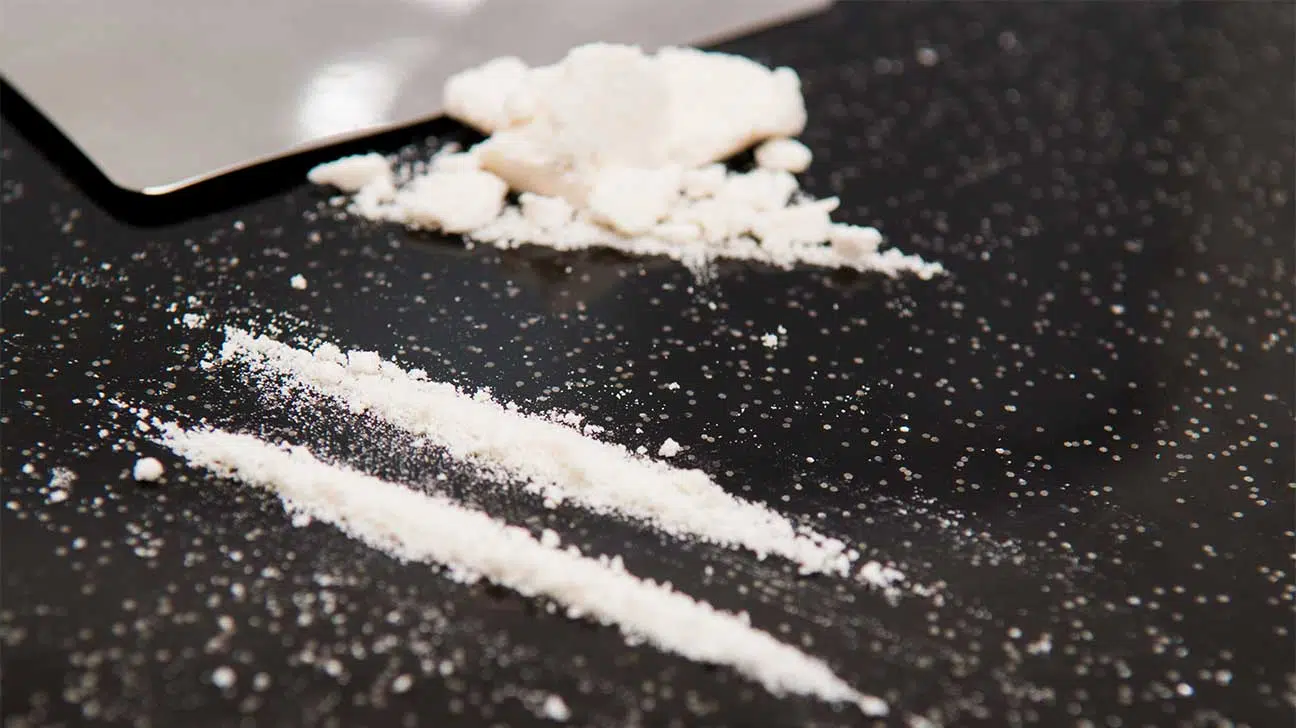What Is Crack Cocaine?
Crack cocaine is a highly addictive stimulant drug. It produces short-term euphoria, but it also creates many dangerous side effects, and it may be more addictive than powder cocaine.

Crack cocaine is a stimulant drug made from coca plant leaves.
Though coca plants are found in South America, crack cocaine can be found in several parts of the world, including the United States.
Crack shares several similarities with powder cocaine, including its risks, effects, and chemical structure.
For instance, addiction to crack and addiction to cocaine can impact all areas of a person’s life and both may be used as a way to cope with grief or the pressures of work and school.
But crack also has a few differences from the powder form of cocaine, including appearance, ingredients, and method of use.
What Does Crack Cocaine Look Like?
One of the most noticeable differences between crack and powder cocaine is the appearance of these drugs.
Unlike white powder cocaine, crack cocaine looks like small hard rocks. These “rocks” may be white or off-white, depending on the purity of the product.
The hardness and coloring come from the production process, which includes mixing cocaine with additives.
How Is Crack Cocaine Made?
The production of crack cocaine begins with cocaine in powder form. A person will mix the cocaine with either ammonia or sodium bicarbonate (baking soda).
They will then add water and boil the mixture until it solidifies and hardens.
The finished product creates a crackling sound when smoked, which is how crack cocaine received its name.
How Is Crack Cocaine Used?
Powder cocaine may be used in a few ways, including snorting and injection. Crack cocaine, in contrast, is almost exclusively used by smoking.
In fact, one of the primary reasons for mixing crack cocaine is to create a form of cocaine that is easily smokable.
Because of the rock-like texture, smoking crack is the simplest way to consume this illicit drug. You can also snort crack and inject crack, but these methods are much less common.
Why Do People Use Crack Cocaine?
Like other forms of cocaine use, crack is used for its euphoric effects. Crack cocaine produces a quick high. When using crack, a person may feel happy, energetic, and social.
Many people choose crack because the cost of crack is less than powder cocaine and is easier to measure and transport.
Cocaine, in general, is the fifth most abused drug in the U.S., and crack provides a simple way for drug dealers to meet demand.
Others may use crack because they want a smokable form of the drug.
Powder cocaine is not smokable due to its high melting point, but some people may be more comfortable smoking the drug than with other forms of drug use, such as snorting or injection.
Crack is also easier and cheaper to make than freebase, another smokable type of cocaine. As a result, it is more common and readily available.
What Are The Side Effects Of Crack Cocaine?
There is a wide range of side effects from crack. Like all forms of cocaine abuse, smoking crack may impact a person’s physical and mental health.
Often, crack addiction treatment must include treatment for these side effects.
Short-Term Side Effects
Some people begin to experience side effects immediately after using crack.
Short-term side effects of crack cocaine include:
- increased heart rate
- heart attack
- constricted blood vessels
- high blood pressure
- increased body temperature
- dilated pupils (“high eyes“)
- anxiety, panic, or paranoia
- appetite loss
- restlessness
Large amounts of crack cocaine may also result in cocaine-induced psychosis, or a break from reality.
Long-Term Side Effects
Often, when people ask “How long does crack cocaine stay in your system?” they want to know how long they should be concerned about these side effects.
However, it is important to note that crack drugs may cause side effects even after the drugs have left the person’s system.
Many of these side effects are more serious than their short-term counterparts.
Long-term side effects of crack cocaine include:
- withdrawal symptoms and intense cravings
- weight loss and malnourishment
- long-term mental health struggles
- heart inflammation and other organ damage
- cognitive difficulties
- mood swings
- convulsions
- insomnia
- stroke
- seizures
- psychosis
Is Crack More Addictive Than Powder Cocaine?
How addictive is crack? Although crack contains cocaine as its primary ingredient, crack may be more addictive than cocaine in its powder form.
In fact, though this phenomenon is rare, it is possible to become addicted to crack after the first time using it.
Many factors play a role in drug addiction, including access and exposure to drugs.
Because crack is cheaper and more easily obtainable than powder cocaine, it may carry a higher risk for addiction.
Furthermore, crack cocaine produces a quicker and more powerful high than pure cocaine. Smoking allows the drug to enter the bloodstream more quickly than snorting.
Though the euphoric effects are strong, they typically do not last longer than a few minutes. Some people may smoke crack multiple times in a row to maintain a longer-lasting high.
This repeated use may heighten the risk of addiction to crack.
How Is Crack Cocaine Addiction Treated?
Healthcare providers treat crack addiction with the same methods they would use to treat powder cocaine addiction.
Treatment may begin with medical detox, which provides supervision and medication to address cocaine withdrawal symptoms.
After detox, a person may receive either inpatient drug rehab or outpatient treatment, depending on their needs.
Both types of treatment may include individual therapy, group therapy, and other addiction therapy options such as contingency management.
Get Treated For Crack Cocaine Addiction
Substance use is a complicated disorder that impacts the brain, body, and emotional health.
Addiction treatment can help people heal from these issues as they recover from crack cocaine use.
If you or a loved one may have an addiction, contact Spring Hill Recovery Center today.
We can walk you through your options and answer questions about crack cocaine, covering rehab with insurance (or without it), and other addiction-related topics.
Our evidence-based treatment plans include several levels of care, so you or your loved one can recover from substance abuse.
- Duke University — Content Background: Why Is Smoked Cocaine (Crack) More Likely To Be Abused Or Addictive Than Snorted Cocaine? https://sites.duke.edu/thepepproject/module-1-acids-bases-and-cocaine-addicts/content-background-why-is-smoked-cocaine-crack-more-likely-to-be-abused-or-addictive-than-snorted-cocaine/
- National Drug Intelligence Center — Crack Cocaine Fast Facts https://www.justice.gov/archive/ndic/pubs3/3978/index.htm
- National Institute On Drug Abuse — Cocaine DrugFacts https://nida.nih.gov/publications/drugfacts/cocaine


